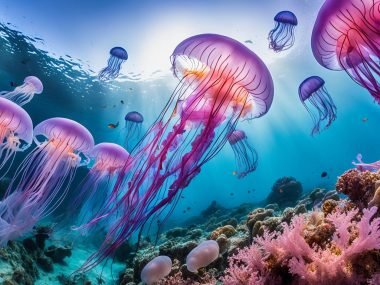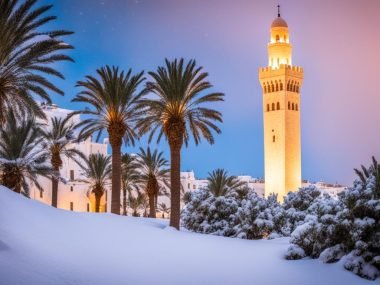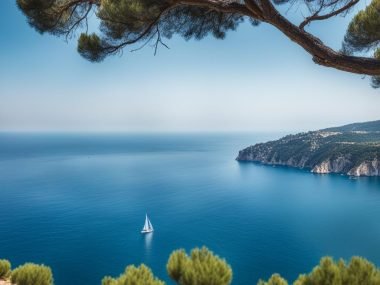Tunisia and Morocco are close, but Tunisia is a bit ahead. In 2022, Tunisia’s GDP per capita was €3,587. Morocco’s was slightly lower at €3,388. This difference begins a big talk about their economies. To see if Tunisia is truly richer, we look at many economic signs.
Looking at GDP, debt, and budget deficits tells us much. It helps us understand their money matters better. This shows us the whole picture of their wealth.
We’ll check out important parts of their economies. This will help us get a full view of their financial health. Knowing about their wealth is useful for many, not just experts.
Key Takeaways
- The GDP per capita for Tunisia in 2022 is marginally higher than that of Morocco.
- Comprehensive economic indicators are necessary to assess financial status Tunisia or Morocco.
- Evaluating GDP trends over recent years will reveal the growth patterns and stability of Tunisia and Morocco.
- Debt levels provide insights into each country’s financial health and future economic sustainability.
- Budget deficits are crucial to understanding each government’s fiscal management and policies.
Introduction
We’re diving into the economies of North African gems, Tunisia and Morocco. They’re full of interesting insights. These insights mix their geography, culture, and economies. We’ll give a detailed Tunisia and Morocco overview that covers the key parts of their economies.
Tunisia is by the Mediterranean, great for trade and tourists. Morocco sits between Europe and Africa. It has beaches and deserts. These locations shape their economies.
Tunisia’s economy is quite mixed with areas like farming, mining, and oil. Morocco’s economy leans on farming, phosphates, tourism, and clothes. They both try different ways to grow their economies and pull in investments. But, they face unique challenges.
Looking at economic comparison between Tunisia and Morocco is key for many. Investors, government folks, and regular people are all interested. They’re looking at stability and what they might earn. So, our comparison will help figure out, “Is Tunisia Richer Than Morocco?“
Annual Gross Domestic Product (GDP)
Looking at the Gross Domestic Product (GDP) helps us understand how Tunisia and Morocco are doing economically. It tells us about their economic health and gives useful info to investors, government folks, and everyone else.
GDP of Tunisia vs Morocco
In 2022, Tunisia’s GDP was €43,991M. This is smaller compared to Morocco’s GDP at €124,220M. This shows the difference in their economic size and activities. Tunisia mainly focuses on agriculture and services. But, Morocco has a wider range including mining and making things.
Trends Over the Years
The GDP trends show us how Tunisia and Morocco have been growing economically. Tunisia’s growth has been steady but slow. On the other hand, Morocco has been growing faster and stronger each year. This tells us about their economic health and possible future.
| Year | Morocco GDP (€M) | Tunisia GDP (€M) |
|---|---|---|
| 2018 | 109,868 | 38,400 |
| 2019 | 115,712 | 40,000 |
| 2020 | 106,924 | 38,923 |
| 2021 | 118,650 | 42,311 |
| 2022 | 124,220 | 43,991 |
The table above shows how Tunisia and Morocco’s GDPs have changed over the years. We see Morocco doing better than Tunisia each year. This helps us think about what might happen next in their economies.
GDP Per Capita Comparison
Looking at GDP per capita, Tunisia and Morocco show us their economic levels. This helps us see the kind of income people in these countries get.
Evaluation of GDP Per Capita
For 2022, Tunisia’s GDP per capita was €3,587. Morocco’s was a bit lower, at €3,388. These numbers show how each country’s wealth is spread among its people. It hints at the income residents can expect.
Impact on Living Standards
GDP per capita affects how well people live in Tunisia and Morocco. It’s linked to the quality of life. This includes access to basics like health care and education. So, Tunisians might slightly better live than Moroccans.
Debt Levels
Looking at Tunisia and Morocco’s debt helps us understand their economic health. Tunisia’s public debt is 79.78% of its GDP, which is about €35,094M. Morocco’s debt is a bit lower, at 71.48% of its GDP or €88,790M.
This national debt comparison shows the financial weight on each country. It tells us about their economic choices and health. When we look at public debt Tunisia vs Morocco, Tunisia has more debt compared to what it earns.

We need to think about how this debt affects both countries’ economies. High debt can make it hard for Tunisia and Morocco to manage their money. It might limit their chances to grow and develop.
Debt Per Capita
When we look at how much debt each person has in Tunisia and Morocco, it’s easier to understand their financial challenges. We will compare their debts and see what it could mean for their future economies.
Debt Per Capita in Tunisia and Morocco
Tunisia’s per person debt was €2,862 in 2022. Morocco’s was a bit less, at €2,421. This difference shows how the financial pressure varies between the two. A higher debt per person means more money each person owes, which can change how much money they can spend.
Implications for Future Generations
Debt per person affects Tunisians and Moroccans differently, shaping their futures. More debt means more responsibility to manage money wisely. This can affect not just the economy, but also how much people can spend on important things like education and health.
- Economic stress on households: More debt puts extra pressure on families, making it hard to save or invest.
- Policy implications: Governments need to create policies to handle debt and protect the economy.
- Intergenerational equity: We must make sure future generations have fair economic chances. This needs wise financial choices from our leaders today.
About debt per person, we have to balance growing the economy and keeping debt in check. This ensures a bright and secure future for both Tunisia and Morocco.
Deficit Analysis
In 2022, Tunisia and Morocco had big money troubles. Tunisia’s shortfall was €2,923M. Morocco’s was much bigger at €6,486M. Comparing their deficits gives us useful info.
The economic gap between Tunisia and Morocco shows how differently they handle money. Tunisia’s deficit was much smaller than Morocco’s. This tells us a lot about their money management and plans.
| Country | Deficit (€M) |
|---|---|
| Tunisia | 2,923 |
| Morocco | 6,486 |
Looking at money policies is key to understanding their effects. The deficit tells us about current money problems and future plans. Knowing this helps us see how ready they are to fix money issues.
Government Expenditures
Looking at how governments spend money tells us what they think is important. Tunisia and Morocco spend on things like schools, health, and defence. These choices affect how well the country does and how happy people are. The spending in 2022 tells us how each country uses its money.
Allocation of Expenditures
In 2022, Tunisia spent €15,441.9M. Morocco spent a lot more, with €40,034.5M. Where they put their money shows what matters to them. For example, Tunisia spends a lot on education and health. This shows they care about their people’s future.
| Country | Government Spending (€M) | Sector Priorities |
|---|---|---|
| Tunisia | €15,441.9 | Education, Healthcare, Defence |
| Morocco | €40,034.5 | Education, Healthcare, Defence |
Impact on Economic Development
Tunisia and Morocco both spend money to grow their economies. Spending on schools and hospitals means a smarter, healthier workforce. This is good for the economy. Tunisia focuses on these key areas to build better social support.
Morocco spends more, aiming at big development works. This shows a strong push for growth now and in the future. This spending in both countries helps make their economies strong and varied.
Education and Health Expenditures
When we look at the money set aside for education and health, we really see how Tunisia and Morocco care about growing in these areas. The numbers from 2022 give us a good view of what they think is important.
Tunisia puts 22.67% of its budget into education. This big amount shows they want to make their education better for a brighter future. Morocco spends a bit more on education, using 23.87% of its budget. This spending is key to help young people and bring new ideas to life.

In health, Tunisia and Morocco show different plans. Tunisia uses 12.40% of its budget for health, showing it values good health services for its people’s happiness. Morocco spends 7.18% on health. Though it’s less, it’s still a sign of their effort to improve health care and social growth.
Looking at these numbers, we see Tunisia and Morocco’s unique ways in education spending Tunisia vs Morocco and healthcare investment. Both want to make their education and health better. But, they choose different paths to do so.
| Education (%) | Health (%) | |
|---|---|---|
| Tunisia | 22.67 | 12.40 |
| Morocco | 23.87 | 7.18 |
Military Expenditures
Tunisia and Morocco spent differently on their military in 2022. This is key to understanding their economies.
Comparison of Defence Budgets
Tunisia spent €1,089.6M on its military, while Morocco spent €4,850.7M. This shows they value Defence differently.
Tunisia used about 7.06% of its budget on Defence. Morocco used more, about 12.12%. This shows Morocco’s bigger military focus.
| Country | Defence Budget (€M) | Percentage of Total Government Expenditure |
|---|---|---|
| Tunisia | €1,089.6M | 7.06% |
| Morocco | €4,850.7M | 12.12% |
Economic Implications
The economic impact of military spending is huge. Tunisia might spend more on education and health since its military budget is smaller. Morocco spends more on its military, which might cut into social spending.
Understanding Tunisia and Morocco’s Defence budgets shows their different economic choices. These choices affect their nation’s finances and what they can invest in.
Trade Balance
In 2023, Tunisia and Morocco both faced big trade deficits. Tunisia’s deficit was €-5,085.7M. Morocco’s was much bigger at €-24,960.9M. These numbers show how these countries interact economically with the world.
It’s important to understand the trade deficits of Tunisia and Morocco. A bigger deficit means they buy more from abroad than they sell. This can affect their economies a lot.
Trade deficits impact many things. They influence foreign money reserves, local businesses, and the need for international loans. Both countries should work on selling more abroad to grow their economies.
Here is a table that shows their trade deficits in 2023:
| Country | Trade Balance (€M) |
|---|---|
| Tunisia | -5,085.7 |
| Morocco | -24,960.9 |
The 2023 trade deficits of Tunisia and Morocco highlight something. They must improve their sales overseas. This will help lessen the bad effects of these deficits. How they deal with the global market is key to their economic future.
Labour Market Comparison
It’s vital to know how labour market dynamics work to understand a country’s economy. Looking at Tunisia and Morocco, we see differences in job rates and lowest pay. This tells us a lot about each country’s economic health and future.
Unemployment Rates
Tunisia and Morocco have different job rates. Tunisia’s joblessness is at 16.1%, much higher than Morocco’s 9.6%. The gap between unemployment Tunisia vs Morocco comes from many reasons. These include economic plans, worker skills, and new job chances.
Minimum Wage and Labour Costs
The lowest pay is higher in Morocco than in Tunisia. Morocco pays €276, but Tunisia gives just €118.7 as of 2022. This big gap in the minimum wage comparison shows the different living costs and job market states. Also, Tunisia’s lower job costs might mean it does well in some industries. Yet, it also makes us think about the living standards of its workers. Both countries need to find a good balance. This will help improve their economies in the area and the world.
Cost of Living and Inflation Rates
The cost of living in Tunisia and Morocco is much affected by their inflation trends. In April 2024, Tunisia’s inflation is at 7.2%. This is much higher than Morocco’s 0.2%. These numbers show how different their economies are. This affects how much people have to spend on daily needs.
The difference in inflation rates changes how affordable things are. This impacts the purchasing power of the people living there.
When looking at the cost of living in Tunisia vs Morocco, think about how inflation changes prices. In Tunisia, high inflation means things get more expensive quickly. This could lower how much people can buy compared to Morocco. Here, inflation is low and stable.
To really understand, we need to look at the inflation trends in both countries. This gives us a better idea of the costs of living. And how they affect people’s financial health. The difference in these economic signs is key for anyone thinking of moving or investing there.
Conclusion
We looked deeply into Tunisia and Morocco’s economies. We checked things like GDP, debt, and how much the government spends. We wanted to see which country was doing better economically. We used many reliable sources for our info.
Our research shows a mixed picture. Tunisia has a bit higher GDP per person than Morocco. But, Morocco’s total GDP is much bigger. Tunisia’s debt per person is high. This means its people have a big financial load. Meanwhile, Morocco spends more on its economy. This shows they have different economic focuses and success levels.
Morocco and Tunisia both have their own strengths and problems. Morocco has fewer jobless people and pays higher minimum wages. This suggests its job market is stronger. Tunisia spends more on health and education. This shows it values social growth. Still, rising prices worry Tunisia, while Morocco’s prices are more stable.
In the end, it’s hard to say which country is ‘richer’. Both Tunisia and Morocco have their own economic strengths. What makes a country richer isn’t simple. Both countries face economic challenges. They need to use what they are good at to improve life for their people.







